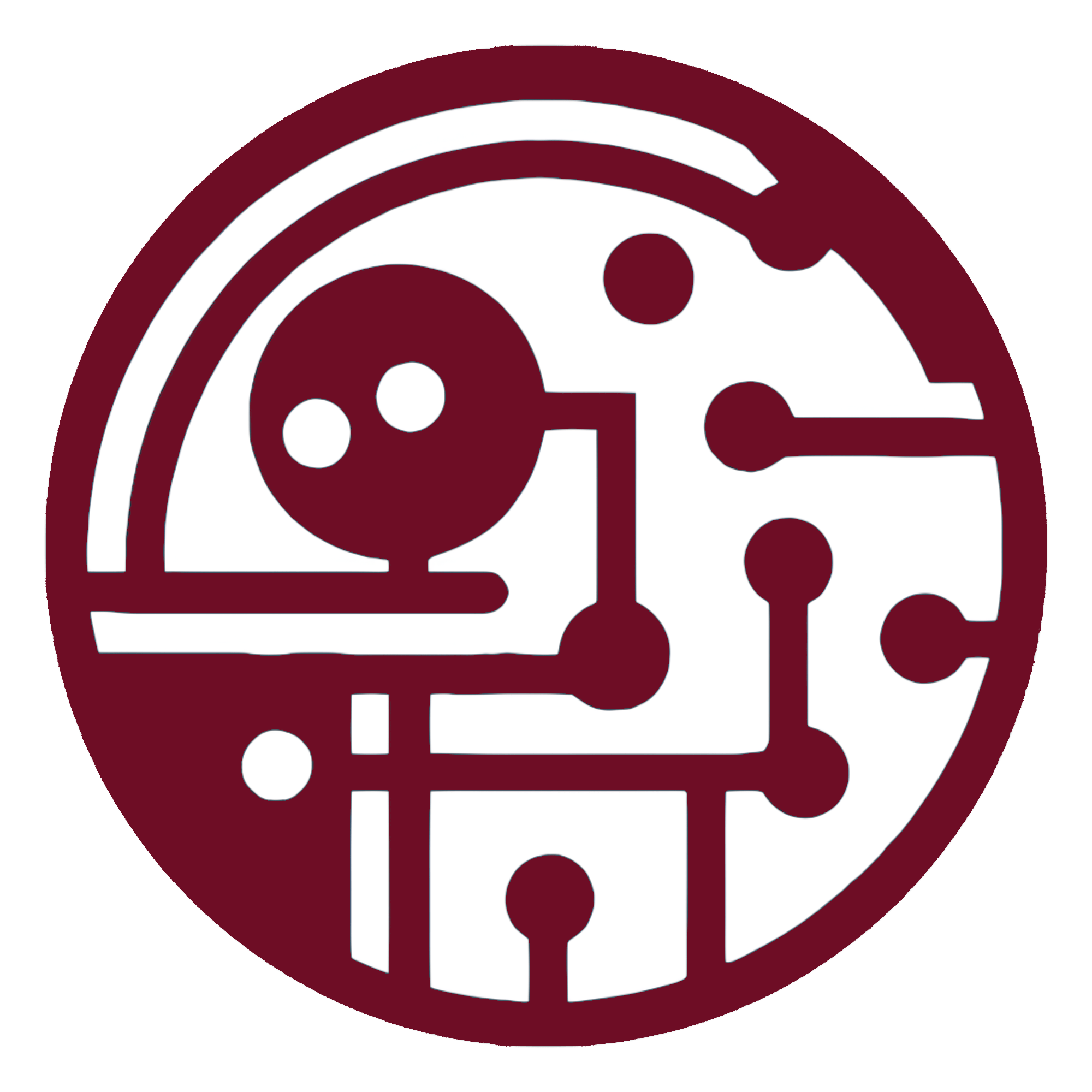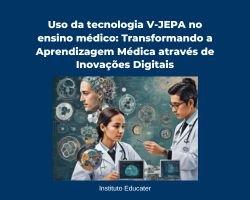Use of V-JEPA technology in medical education: Transforming Medical Learning through Digital Innovations
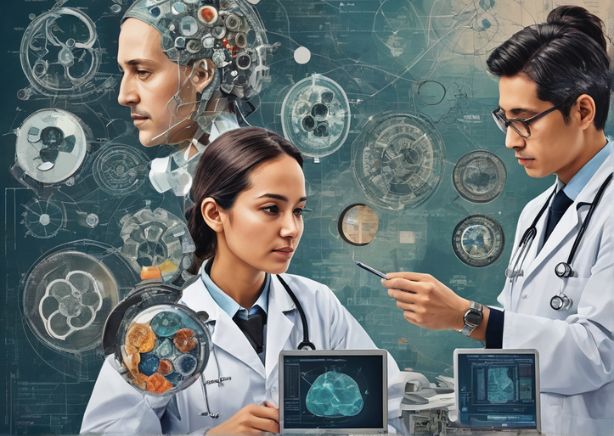
In the current digital era, the integration of advanced technologies in the field of medical education represents a significant step towards improving teaching methodologies. The V-JEPA technology, recently introduced by the company Meta, is an innovation that promises to transform the way medical knowledge is transmitted and absorbed by students. This article explores the impact of this technology on medical education, highlighting its potential to facilitate deeper and more interactive learning.
In the current scenario, where digitalization is reshaping all spheres, the integration of advanced technologies in medical education represents an evolution. With the introduction of V-JEPA technology by Meta, we are on the cusp of an educational revolution that promises to radically transform the way medical knowledge is transmitted. This advancement not only improves students' absorption of knowledge, but also encourages a more comprehensive learning experience. deep and interactive.
V-JEPA technology, a significant innovation in the field of artificial intelligence, is designed to understand and predict human actions within virtual environments. This ability to interpret complex gestures and intentions makes V-JEPA an ideal tool for medical simulations, where accuracy and understanding intentions are critical. Therefore, its application in medical teaching can revolutionize traditional methods, introducing a level of realism and involvement previously unattainable.
Imagine a learning environment where every surgical procedure is accompanied by real-time analysis and instant feedback. V-JEPA makes this possible by allowing medical students to practice complex techniques in a controlled and safe setting. This not only reduces the learning curve, but also better prepares future doctors for the challenges of the real clinical environment.
The potential of advanced simulations offered by V-JEPA technology extends beyond practical training. It also facilitates a better understanding of complex medical procedures and techniques, which are often difficult to demonstrate in reality. The ability to view and interact with these procedures in a safe and repeatable environment is invaluable to medical learning.
However, the adoption of this advanced technology in medical education does not come without challenges. Issues such as data privacy, ethics and the need to balance technology and real human interaction are decisive and must be addressed seriously by institutions that choose to implement V-JEPA in their curricula.
As we explore more deeply the benefits and challenges of integrating V-JEPA technology into medical education, it becomes clear that this is a powerful tool capable of significantly enriching medical education. With the ability to improve both practical skills and medical theory, V-JEPA positions itself as a promising educational innovation.
To find out more about how V-JEPA technology is being applied specifically to teaching core medical subjects such as anatomy and physiology, and see examples of interactive simulations in action, read on in the next section of this article, where we explore its impact on understanding of body structures and biological systems in detail.
Discover how V-JEPA technology is revolutionizing medical education in our in-depth article. We explore the innovative ways in which this cutting-edge technology is being integrated into educational practices, offering students interactive and immersive learning experiences that effectively prepare future doctors for real-world challenges.
Join us as we discuss the benefits, practical applications, and ethical and technical challenges of V-JEPA, providing a complete view of its transformative impact on medical education.
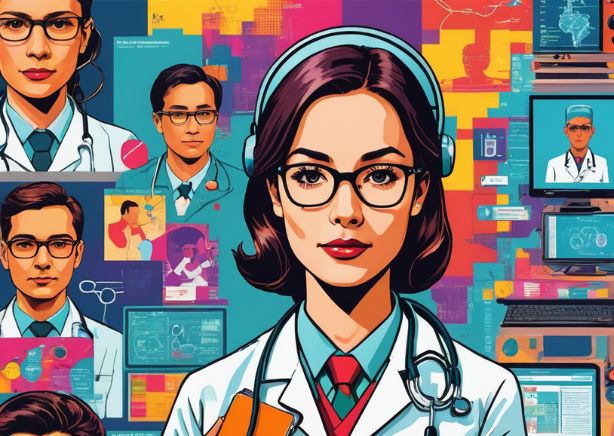
Understanding the V-JEPA Model
V-JEPA technology, developed by Meta, is a cutting-edge approach that uses artificial intelligence models to understand and predict human actions in virtual environments. This technology not only identifies movements and gestures, but also interprets complex intentions behind these actions, making it ideal for medical simulations where precision and intention are important points.
The model V-JEPA, introduced by Meta, is a revolutionary innovation in the use of artificial intelligence to improve medical education. Using advanced machine learning techniques, V-JEPA is not limited to recognizing movements and gestures; it goes further, interpreting the intentions behind each action within a virtual environment. This level of detailed understanding is important for medical simulations, where procedural accuracy and intent are paramount.
In an educational setting, the practical application of V-JEPA technology manifests itself in its ability to create extremely realistic simulation environments. Teachers and students can now experience complex medical situations in a controlled space that mimics real-life conditions with great fidelity. This allows for more effective learning and better preparation for real medical situations where decisions need to be quick and accurate.
V-JEPA's ability to predict human actions before they occur is one of its most valuable attributes. By anticipating student gestures and decisions during simulations, instructors can provide immediate feedback, correcting errors in real time and reinforcing correct behaviors. This is an incomparable advantage that enhances the training and qualification of future doctors.
Additionally, V-JEPA technology also facilitates the study of rare or complex medical cases, which may not often be available for study in a conventional hospital setting. Students can repeat these scenarios as many times as necessary to gain proficiency without the risk of harming a real patient.
The developers of the V-JEPA model emphasize its adaptability to different medical specialties, which makes it a versatile and robust educational tool. This flexibility is essential to meet the specific needs of each medical field, providing personalized training that addresses the nuances of each discipline.
However, while the technology offers significant advantages, it is also essential to consider the ethical implications of its application. Interpreting the intentions behind gestures and actions requires careful handling of data to ensure the privacy and integrity of those involved.
How is V-JEPA being applied in medical education today? The next segments of this article will explore how this technology is being implemented in different educational institutions, and what the results are observed both in terms of student performance and the effectiveness of training programs.
To discover how V-JEPA technology is used specifically in surgical practice and the impact of these simulations on student preparation, continue reading in the next section, where we will detail the application of V-JEPA in medical education.

Application in Medical Education
Imagine performing surgical procedures in a controlled environment where every student gesture is analyzed in real time. V-JEPA technology allows the creation of simulators that offer instant and personalized feedback, a valuable tool for students who need to master complex techniques with great precision.
The integration of V-JEPA technology into medical education is an innovation that redefines traditional practices, especially in surgical training. Imagine performing surgical procedures in a controlled environment where every student gesture is not only observed, but also analyzed in real time. This scenario is no longer science fiction, but a viable reality through advanced simulators developed with the help of V-JEPA technology.
These simulators provide instant, personalized feedback that is essential for learning complex techniques required in modern medicine. The ability to receive immediate guidance and correct errors as they occur significantly speeds up the learning process, ensuring that future doctors acquire practical skills with a high degree of accuracy.
Furthermore, V-JEPA technology allows simulations to be customized to meet individual student needs. This means each training session can be tailored to focus on specific areas of improvement, making medical education more efficient and targeted.
The value of this technology also lies in its ability to simulate a wide variety of medical conditions and surgical procedures, from the most common to the rarest. This prepares students to face any situation in medical practice, equipping them with knowledge and skills that are difficult to develop through theoretical studies or traditional practices alone.
The implementation of V-JEPA in medical education also serves as a valuable assessment tool. Educators can monitor and evaluate student performance in real time, providing detailed feedback that is central to students' ongoing professional development.
This technology not only improves students' practical skills but also increases their confidence when facing real medical procedures. Knowing that they have already practiced extensively in an environment that replicates reality so faithfully, students feel more prepared and secure.
Ultimately, the adoption of V-JEPA technology in medical education demonstrates a commitment to educational excellence, keeping institutions at the forefront of global medical education. By adopting such innovative technologies, medical schools not only improve the quality of teaching but also contribute to the evolution of medical practice in general.
In the next section, we will explore the specific benefits of the advanced simulations enabled by V-JEPA, detailing how they contribute to a deeper understanding of medical procedures and techniques. Stay with us to discover more about V-JEPA's transformative impact on medical education.
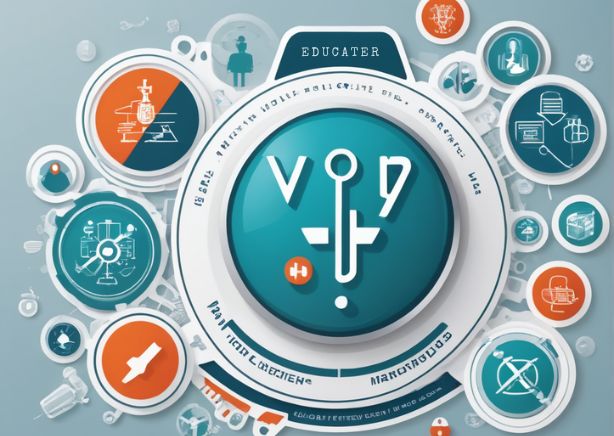
Benefits of Advanced Simulation
The use of V-JEPA in medical education is not limited to improving practical skills. This technology can also lead to better theoretical understanding, as it allows students to visualize procedures and techniques that are difficult to replicate in reality. Furthermore, the ability to repeat simulations with minimal variations helps consolidate learning, reducing the forgetting curve.
The incorporation of V-JEPA technology into medical education goes beyond improving practical skills. The advanced simulations made possible by this technology are a necessary bridge between theory and practice, providing students with a clear view of procedures and techniques that are challenging to replicate in real-world environments. This aspect is important, especially in medical disciplines where direct practical experience may be limited due to ethical or logistical constraints.
By viewing and interacting with simulations that closely mimic reality, students can better understand the applicability of theoretical knowledge in practical contexts. This integration of knowledge strengthens the learning base and increases students' competence, more effectively preparing them for their future medical careers.
V-JEPA technology also offers the possibility of repeating simulations with minimal variations, a feature that is essential for consolidating learning. The ability to practice repeatedly, tweaking small details and receiving immediate feedback, allows students to develop a deeper, more refined understanding of medical techniques.
Additionally, V-JEPA simulations can be customized to address specific or rare cases that students may not often encounter. This exposure to a wider range of clinical scenarios increases students' adaptability and readiness for any situation they may face in the future.
The learning efficiency is remarkably improved by using V-JEPA simulations. Studies demonstrate that simulation-based learning leads to longer-lasting knowledge retention compared to more passive teaching methods. Therefore, students not only learn but retain knowledge more effectively.
Another important benefit is the reduction of the forgetting curve. By allowing students to review and practice procedures multiple times, V-JEPA ensures that knowledge is continually reinforced, which is essential for the long-term memorization and application of medical techniques.
This level of engagement and repetition not only solidifies knowledge, but also prepares students to respond confidently under pressure in real-world situations, a critical aspect in the medical field where quick, accurate decisions are often required.
To understand more about the challenges and ethical considerations associated with using V-JEPA technology in medical education, the next section of this article will discuss these issues in detail. Stay with us to explore how institutions are addressing these challenges as they implement advanced simulations into their curricula.
Challenges and Ethical Considerations
Despite the numerous benefits, implementing technologies such as V-JEPA in medical education brings challenges. Questions of privacy and ethics emerge, especially in relation to the processing of data generated by simulations involving virtual patients. It is essential that institutions that adopt this technology establish clear guidelines to ensure the protection of information and the integrity of the educational process.
The adoption of innovative technologies such as V-JEPA in medical education, although full of benefits, is not without significant challenges. Questions of privacy It is ethic emerge as these technologies become more integrated into the medical curriculum. In particular, the handling of data generated by virtual patient simulations presents an ethical minefield that institutions must navigate carefully.
A primary concern is the security of the data collected during simulations. Sensitive information, if poorly managed, can lead to privacy violations that not only compromise the integrity of those involved but also the reputation of educational institutions. Therefore, it is vital to establish strict security and privacy protocols from the beginning of using V-JEPA.
Another aspect is to ensure that the data generated is not used for purposes beyond the educational scope. This implies a need for clarity in data use guidelines, ensuring that all participants understand how their information is used and what their rights are in relation to this data.
Furthermore, simulations must be designed ethically to avoid desensitizing students to real medical scenarios. The design and implementation of simulations must therefore reflect real ethical dilemmas and decisions that doctors face, preparing students not only technically but also morally.
It is equally important to consider the emotional impact of simulations on students. Institutions should create support mechanisms to help students process virtual experiences, especially when they involve complex medical cases or adverse outcomes.
Collaboration between educational institutions and regulatory bodies is essential to establish ethical standards that govern the use of V-JEPA. These guidelines should be regularly reviewed and updated to reflect technological advances and changes in the ethical standards of medical practice.
Ultimately, by overcoming these ethical and privacy challenges, institutions can ensure that V-JEPA technology is used responsibly and productively, strengthening medical education without compromising fundamental ethical principles.
Moving forward, the next section will explore how V-JEPA is being implemented in the foundations of medical education, specifically in fundamental disciplines such as anatomy and physiology. Follow along to discover how this technology is transforming learning in these essential areas.

Maximizing the Base: V-JEPA in Fundamental Medical Education
In the context of basic medical courses, such as anatomy and physiology, V-JEPA technology can be applied to create interactive three-dimensional models of body structures and biological systems. This allows students to visualize and manipulate these structures in a virtual environment, facilitating a deeper and more detailed understanding of human complexity. Additionally, V-JEPA can be used to simulate physiological reactions to treatments and interventions, offering students a practical perspective on the impact of their medical actions from the beginning of their training.
In the scope of basic subjects such as anatomy and physiology, V-JEPA technology can redefine the traditional teaching method. Through the creation of interactive three-dimensional models of bodily structures and biological systems, this technology allows students to not only see, but also manipulate these structures in a virtual environment. This approach promotes a deeper and more detailed understanding of human complexity, far beyond what static models or two-dimensional drawings could offer.
Three-dimensional visualization allows students to explore every aspect of body structures, from individual bones to the interaction between different organ systems, providing a more complete and integrated perspective of the human body. This immersive experience helps solidify theoretical knowledge through direct observation and interaction.
In addition to anatomy, V-JEPA can also be used to study physiology. Technology can simulate physiological reactions to treatments and interventions, which gives students practical insight into the real impact of their medical actions. Such simulations are especially valuable in an educational setting, where understanding the theory behind medical practice is as important as the practice itself.
These models are not just visual tools; they are interactive, allowing students to perform virtual experiments and observe the results in real time. This ability to immediately experiment and visualize the consequences of different medical interventions strengthens learning and encourages safe and ethical experimentation.
V-JEPA technology also helps overcome one of the biggest challenges in medical education: the scarcity of material for practical study, such as cadavers for dissection. With detailed and accurate simulations, the need for physical resources is significantly reduced, making learning more accessible and less restrictive.
The impact of these simulations goes beyond the individual, benefiting the medical curriculum as a whole. By integrating V-JEPA into core subjects, educational institutions can ensure that their students are well prepared for the more advanced challenges of their medical training.
The use of V-JEPA in the basic subjects of the medical course not only enriches the educational experience of students, but also establishes a solid foundation for the holistic and practical understanding of medicine, essential for any future professional in the field.
In the next section, we will explore how educators are integrating V-JEPA technology into teaching planning, ensuring that advances in medical education continue to evolve and respond to the needs of students and the changing medical environment. Follow along to discover more about these innovative strategies.
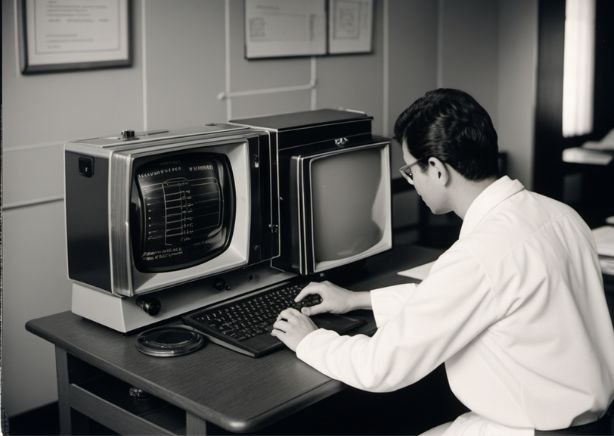
Innovative Strategies: Integrating V-JEPA into Didactic Planning
The adoption of V-JEPA technology in didactic planning involves the integration of realistic simulations into the medical curriculum, which can be programmed to complement theoretical classes. Educators can use V-JEPA to create specific scenarios, such as medical emergencies or complex procedures, allowing students to practice their skills in a controlled and safe environment. This not only reinforces theoretical learning, but also prepares students for clinical practice, increasing their confidence and competence before facing real situations.
The incorporation of V-JEPA technology into didactic planning represents a significant advance in medical education. Through the use of realistic simulations, educators can complement theoretical teaching with practical scenarios that challenge students to apply their knowledge in a simulated clinical context. This method not only reinforces learning but also effectively integrates theory with practice.
Using V-JEPA, educators can create simulations of medical emergencies or complex procedures, providing students with the opportunity to practice essential skills in a controlled, safe environment. These simulations are designed to mimic real challenges that students will face in the future, more fully preparing them for clinical practice.
In addition to reinforcing theoretical learning, simulations with V-JEPA help develop students' decision-making abilities. In a simulated environment, students can experience the consequences of their medical actions without risk, which is a powerful tool for learning.
Didactic planning with V-JEPA also allows for curriculum customization. Each simulation can be adjusted to focus on specific areas of interest or difficulty, making learning more targeted and efficient. This flexibility is essential to meet the individual needs of each student.
V-JEPA technology also facilitates continuous assessment of student progress. Educators can directly monitor how students respond to different clinical situations, adjusting teaching and simulations as needed to maximize learning.
Integrating V-JEPA into didactic planning not only improves the quality of teaching, but also raises the standard of students' preparation to face the real clinical environment, significantly increasing their confidence and competence.
The impact of implementing this technology extends beyond the individual, benefiting the entire institution by placing medical education programs at the forefront of educational innovation.
To explore how medical teachers are using V-JEPA to improve their teaching and the impact of this technology on students' professional development, continue reading in the next section of this article, where we will address the transformative role of the educator in the age of advanced technology.
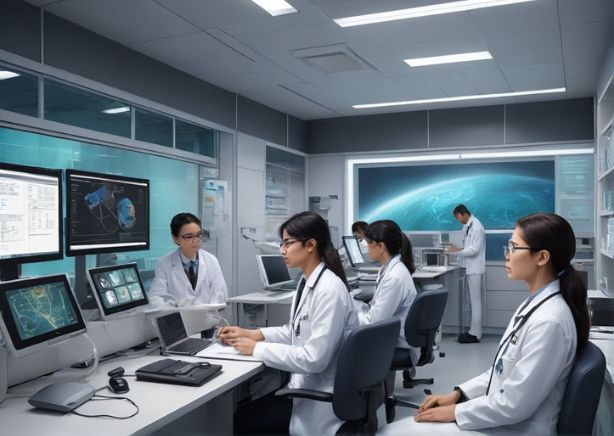
Elevating Teaching: The Transformative Role of the Teacher with V-JEPA
Medical teachers can use V-JEPA technology to enrich their teaching methodologies, making classes more interactive and engaging. By incorporating V-JEPA simulations, teachers can demonstrate procedures and techniques in real time, immediately providing visual feedback and corrections to students' movements and decisions. This approach not only improves information retention, but also encourages critical thinking and the practical application of theoretical knowledge, essential elements for training a competent doctor.
The adoption of V-JEPA technology by medical teachers can revolutionize teaching methodologies by making classes more interactive and engaging. This technology allows the simulation of medical procedures in real time, an innovation that provides students with a more concrete and applicable learning experience.
By integrating V-JEPA simulations, teachers can demonstrate complex medical techniques and procedures while offering visual feedback and immediate corrections. This ability to adjust in real time is critical to effective learning, allowing students to better understand and correct their mistakes instantly.
This approach not only improves information retention but also activates students' critical thinking. By facing simulated clinical scenarios that require quick decisions, students learn to apply their theoretical knowledge in a practical and thoughtful way.
Additionally, V-JEPA technology makes teaching easy to personalize. Teachers can adapt simulations to meet the specific needs of each class or even individual students, making teaching more targeted and personally relevant.
The implementation of V-JEPA also encourages richer interaction between teachers and students. Discussions are often deeper and more productive when students can concretely visualize what they are learning and experience the consequences of their actions in a safe environment.
Using V-JEPA can prepare future doctors not just to pass exams, but to excel in medical practice. Advanced practical training builds students' confidence by equipping them with the ability to competently manage complex medical situations.
Ultimately, V-JEPA technology transforms the traditional role of the teacher from a transmitter of information to a facilitator of rich, interactive learning experiences. This evolution is important to keep medical education aligned with continuous technological innovations in the healthcare field.
In the next section, we will discuss the potential issues that may arise with the use of V-JEPA technology in medical education, and how institutions can address these challenges to maximize benefits while minimizing risks. Keep following for more details.
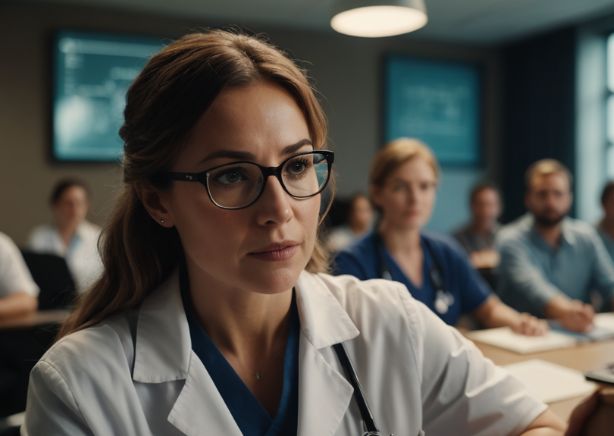
Challenges on the Digital Frontier: Potential Problems with V-JEPA in Medical Education
Despite its many advantages, the use of V-JEPA technology in medical education is not without problems. Technical issues such as the need for advanced hardware, compatible software, and adequate training for teachers and students can pose significant barriers. Furthermore, over-reliance on virtual simulations can potentially divert focus from developing interpersonal and communication skills, which are equally important in medical practice. It is important that institutions implementing this technology maintain a healthy balance between traditional teaching and new digital tools to maximize benefits without compromising fundamental aspects of medical training.
While V-JEPA technology offers numerous advantages for medical education, its use also presents significant challenges that cannot be ignored. Technical issues such as the need for advanced hardware, compatible software, and ongoing training of teachers and students are just the beginning of a complex list of barriers.
Investment in robust technological infrastructure is essential, but many institutions face budget constraints that can slow or even prevent the implementation of such technologies. This reality puts additional pressure on schools to find cost-effective solutions without compromising the quality of education.
In addition to technical barriers, there is growing concern about excessive reliance on virtual simulations. Although these simulations provide a controlled and safe learning environment, they can also limit the development of interpersonal and communication skills—skills that are central to effective medical practice.
Face-to-face interaction with patients and the ability to navigate emotional and ethical complexities are fundamental parts of medicine. Simulation, no matter how advanced it is, cannot completely replace the richness of real human experiences.
Therefore, it is an important point that institutions maintain a balance between the use of new technologies and more traditional teaching methods. Integrating V-JEPA with pedagogical practices that value both technical competence and humanistic skills is fundamental for complete medical training.
This balance also helps prepare students for the multifaceted realities of medical practice, where technology is a tool, not a substitute for clinical judgment and empathy.
Furthermore, institutions must be proactive in anticipating these challenges and developing strategies that allow students to make the most of available technologies without becoming overly dependent on them.
Stay tuned for the next section of this article, where we will address the future opportunities and challenges of integrating V-JEPA technology into medical education, offering a comprehensive look at how this tool can continue to evolve and adapt to the needs of modern medical students.
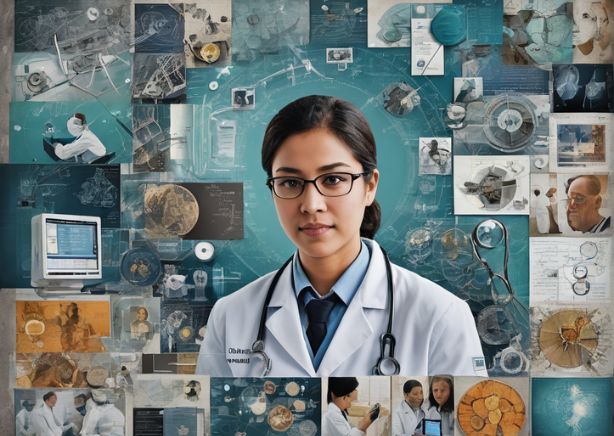
Conclusion
The integration of V-JEPA technology into medical education has the potential to revolutionize the field by providing an immersive and interactive educational experience. By overcoming technical and ethical challenges, institutions will be able to offer students an exceptional tool for improving their skills. As future medical professionals, students benefiting from this technology will be better prepared to face clinical challenges with greater confidence and competence.
The integration of V-JEPA technology into medical education represents a significant advancement in the way education is delivered to future healthcare professionals. With its ability to provide an immersive and interactive educational experience, V-JEPA has the potential to profoundly transform the medical field.
By facing and overcoming technical and ethical challenges, medical education institutions have the opportunity to not only improve their teaching methodologies, but also to offer students exceptional tools that significantly improve their practical and theoretical skills.
Medical practice is demanding and complex, and adequate preparation of students is another key to ensuring that they can face these challenges with confidence and effectiveness. V-JEPA, by simulating real medical conditions in a controlled manner, allows students to experiment and learn from mistakes in a safe environment without real consequences.
This type of training not only increases students' confidence, but also strengthens their clinical judgment and decision-making skills. These are essential qualities that future doctors need to provide effective and sensitive care to their patients.
Additionally, V-JEPA's ability to adapt to individual learning needs offers unprecedented personalization in medical education, allowing each student to maximize their learning potential.
Institutions that adopt this technology are, therefore, not only investing in educational tools, but also in a more competent medical future prepared for continuous advances in the field of healthcare.
We encourage everyone involved in medical education to consider how V-JEPA technology can be integrated into their curricula to enrich students' learning experience and better prepare them for a successful medical career.
We would like to hear your experiences and thoughts about integrating V-JEPA technology into medical education. Please send a message sharing your opinions or how you have used this technology at your institution. Your contribution is valuable as we continue to develop and adapt our educational practices to the needs of the future of medicine.
By contemplating the adoption of innovative technologies like V-JEPA, medical education institutions will not only be investing in the future of medical education, but also in the evolution of medical practice, positively impacting the quality of patient care.
How about sharing this story with your colleagues?
Together, we can inspire positive change in medical education, shaping future healthcare professionals who are more prepared and connected to the needs of the 21st Century.
Share now and be part of this transformation!
Common questions
Technology for medical education refers to the use of digital tools and advanced software to improve the teaching and learning process in medicine. These technologies include virtual simulations, augmented reality, virtual reality and learning management systems that allow medical students and professionals to practice procedures, diagnose conditions and learn about anatomical complexities in a controlled and safe environment.
Integrating these technologies into the medical curriculum aims to not only enhance students' ability to retain information and apply practical knowledge, but also to better prepare them for the realities of the modern clinical environment. This is done through realistic interactions and immediate feedback, which are essential for developing critical skills.
With the continued advancement of these technological tools, medical education is becoming more accessible, effective, and adaptable to students' individual needs. Institutions that embrace these innovations are leading the way in preparing a new generation of medical professionals equipped to meet the challenges of modern medicine.
Technology in health education offers multiple tools that improve learning, from e-learning platforms to advanced simulations. These tools allow healthcare students to practice essential skills risk-free, using virtual simulations that replicate real medical scenarios. This not only improves patient safety, but also increases students' confidence in their practical skills.
Technology also facilitates access to up-to-date educational resources, allowing students and healthcare professionals to continue learning the latest practices from anywhere in the world. This is particularly useful in rural areas or developing countries where access to educational materials and specialized training may be limited.
Additionally, analytics and data management tools can help educators monitor student progress and adapt curriculum to meet individual needs, ensuring more effective training. The integration of technology in health education is essential to prepare more qualified professionals ready to face the challenges of the medical field.
Key advances in medical education include the adoption of clinical simulations and virtual reality, which provide students with risk-free practical experiences. These technologies allow students to learn complex surgical techniques and procedures in a controlled environment, significantly improving their skills before entering a real clinical setting.
Another significant advance is the use of artificial intelligence to personalize learning. AI systems can analyze student performance to adapt study materials to their specific needs, optimizing study time and increasing learning effectiveness.
Furthermore, the integration of interactive online platforms has facilitated collaboration and access to educational resources on a global scale. Medical students can now participate in webinars, access extensive digital libraries and collaborate with colleagues and experts from around the world, which significantly expands their knowledge and preparation for the challenges of the profession.
Over the past five years, medical education has witnessed several significant innovations, most notably the integration of augmented reality (AR) and virtual reality (VR) technologies. These technologies have transformed hands-on training, allowing medical students to perform complex procedures in a safe, simulated environment, which improves both accuracy and confidence before dealing with real patients.
Another important innovation is the increasing use of adaptive learning platforms that use artificial intelligence to create personalized curricula. These platforms continually assess student progress and adjust learning material to meet their specific needs, ensuring a more effective and efficient approach to medical education.
Additionally, there has been an increase in the use of big data to inform and improve teaching practices. By analyzing large volumes of data, institutions can identify trends, predict learning needs, and optimize educational resources to better prepare future doctors for contemporary healthcare challenges.
Major technological advances in medical education include the extensive use of digital simulations and virtual reality (VR), which allow students to practice medical procedures in a safe and controlled environment. These technologies simulate complex clinical situations, allowing students to gain practical experience without risk to patients.
Artificial intelligence (AI) also has a significant role, especially in providing personalized learning and formative assessment. AI-based systems can analyze student performance in real time and adjust teaching materials to meet individual learning needs, which improves the efficiency and effectiveness of medical education.
Another notable advancement is telemedicine, which has been increasingly incorporated into the medical curriculum. Telemedicine not only exposes students to emerging technologies in clinical practice, but also prepares them to provide medical care in an increasingly digitized world, improving access to healthcare in remote and underserved areas.
Technological advances in the area of education have been significant, highlighting the development of online learning platforms that offer access to a wide variety of educational resources anywhere in the world. This democratized access to education, allowing students from remote areas or those with limited resources to participate in quality courses.
The use of augmented reality (AR) and virtual reality (VR) technologies in classrooms has transformed the teaching of subjects that require spatial and practical understanding, such as biology, chemistry and medicine. These technologies provide immersive experiences, facilitating complex learning through detailed and interactive visualizations.
Another important advance is the increasing adoption of artificial intelligence for personalizing teaching. AI tools are being used to adapt educational content to students' individual needs, optimizing study time and improving learning outcomes through systems that adjust the difficulty of exercises and the pace of lessons in real time.
The importance of using technology in medical education is vast, providing a series of benefits that transform teaching and learning. Technologies such as virtual simulations and augmented reality allow medical students to gain hands-on experience in a controlled environment, where they can learn procedures and techniques without risk to patients. This not only increases patient safety, but also strengthens the confidence and competence of future doctors.
Additionally, the use of technology facilitates access to up-to-date medical information, allowing students and professionals to stay informed about the latest research, treatments and emerging technologies. Tools such as online databases, e-books, and journals accessible on digital platforms are essential for continuous and comprehensive medical education.
Finally, technology in medical education also supports the personalization of learning, adapting to the individual needs of each student. Intelligent systems can analyze student progress to adjust learning material, ensuring that each student receives support as needed and can progress at their own pace. This level of personalization is central to maximizing teaching effectiveness and preparing more qualified medical professionals to meet the challenges of the healthcare field.
Technology significantly facilitates medical education by providing more interactive and effective learning methods. Digital simulations and virtual reality allow medical students to practice surgical and diagnostic procedures in a safe virtual environment without risk to real patients. These tools help improve technical accuracy and make decisions under pressure, critical skills for medical practice.
Additionally, technology in medical education promotes continuous access to up-to-date information. Online platforms provide educational resources such as research articles, procedure videos, and conferences that can be accessed globally, allowing students and professionals to stay up to date with the latest advances in medicine.
Artificial intelligence tools also play a role in personalizing learning and optimizing studying. AI-based systems can adapt educational content to students' learning needs, monitor their progress and provide immediate feedback. This results in a more efficient learning experience, preparing medical students more effectively to face future challenges in their professional careers.
The advantages of using technology in medical education are multiple and impactful. First, technology significantly improves access to educational resources. E-learning platforms, interactive digital content and vast online repositories allow students and teachers to access up-to-date, high-quality information from anywhere in the world, overcoming geographic barriers and facilitating continuous learning.
Another advantage is the advanced simulation, which offers students the opportunity to practice clinical skills in safe and controlled environments. Virtual reality and 3D simulations allow students to perform complex procedures, learn to use equipment and respond to medical emergencies without risk to real patients, which is essential for developing practical skills.
Furthermore, technology enables personalized teaching methods, using artificial intelligence to adapt teaching material to the individual needs of each student. Intelligent systems analyze performance in real time, adjusting difficulties and offering instant feedback, which enhances learning and prepares future doctors in a more efficient and targeted way.
While technology offers many advantages in medical education, there are also some significant disadvantages. One of them is the high cost associated with acquiring, maintaining and updating advanced technologies. This can be an obstacle for institutions with limited resources, limiting access to cutting-edge technology for students and teachers in some regions or institutions that are less financially advantaged.
Another disadvantage is the potential excessive dependence on simulations and digital resources, which can distance students from real practical experiences with patients. While simulations provide a safe environment for practice, they cannot fully replicate the complexity and unpredictability of real human interactions and medical conditions, which can negatively impact students' ability to respond effectively in real-world situations.
Furthermore, implementing technology in medical education requires a robust IT infrastructure and ongoing technical support. Technological failures, software compatibility issues and systems outages can interrupt the learning process and require institutions to continually invest in technical support and staff training, which adds another level of complexity and cost to the educational process.
Digital technologies in health refer to the use of computational and communication tools to treat patients, conduct medical research, educate healthcare professionals, and manage health-related information. This includes everything from electronic health record systems and telemedicine to virtual reality platforms used for surgical training and health apps that monitor chronic conditions and promote healthy lifestyles.
These technologies allow for a significant improvement in the quality of patient care, offering more accurate and efficient methods for diagnosis and treatment. Furthermore, they facilitate communication between healthcare professionals and patients, improving access to medical care, especially in remote or underdeveloped areas.
The impact of digital technologies also extends to healthcare research and development, accelerating the pace of medical innovation and enabling deeper analysis of large volumes of healthcare data. This helps identify trends, develop new therapies, and personalize treatment to meet each patient's individual needs.
Technology has brought a number of significant benefits to people, improving quality of life, increasing efficiency and connecting the world in previously unimaginable ways. Firstly, it facilitated global communication, allowing people from different parts of the world to connect instantly through smartphones, the internet and messaging apps. This has not only made personal relationships more accessible, but also opened up new avenues for business and education, making the exchange of information quick and easy.
Furthermore, technology has played a role in improving health and well-being. Advances in medical devices and health applications allow continuous monitoring of chronic conditions, offer new treatment modalities and facilitate access to medical information, significantly contributing to a healthier and longer life. Technology has also improved accessibility for people with disabilities, offering innovative solutions that support independence and social inclusion.
In the field of education, technology has transformed learning by making educational resources more accessible and customizable. Online learning platforms, interactive digital resources and adaptive teaching programs allow students of all ages and from different contexts to have access to quality education, personalized to their needs and learning paces. These technological tools not only expand knowledge, but also prepare people for an increasingly digital job market.
Technology has the potential to profoundly change the teaching profession, transforming both teaching methods and interaction with students. Firstly, digital tools and online educational resources allow teachers to access a wide range of teaching materials that can enrich classes and adapt content to students' individual needs. This includes everything from interactive learning platforms to simulations and educational videos, which make it easier to present complex concepts in a more understandable and engaging way.
Additionally, technology allows teachers to monitor student progress in real time through learning management systems and automated assessment tools. This not only simplifies test administration and assignment marking, but also provides valuable insights into student performance, enabling more accurate and personalized pedagogical interventions. Such tools also promote greater interaction and continuous feedback, elements for a dynamic and responsive learning environment.
Finally, the adoption of technology in education is expanding the role of the teacher from a transmitter of knowledge to a facilitator of learning. With access to technological resources, teachers can encourage students to take a more active role in their own education, promoting skills such as research, critical thinking and problem solving. This change not only enriches the learning experience, but also prepares students for the demands of an increasingly technology-based world.
Technological transformations have a profound impact on teaching practice, revolutionizing not only the way content is delivered, but also how educators interact with students and assess their progress. With the integration of digital tools, such as tablets and educational software, teachers can create more interactive and engaging classes, which capture students' interest and facilitate the understanding of complex concepts through visualizations and simulations.
Furthermore, technology enables more personalized teaching practice. Adaptive learning systems and learning management platforms allow teachers to monitor the performance of each individual student, adapting activities and resources to meet specific learning needs. This is especially valuable in diverse classrooms, where students may have different learning paces and different preferred styles.
Finally, emerging technologies such as artificial intelligence and data analytics offer new possibilities for real-time feedback and formative assessments, transforming the way learning outcomes are measured and providing instant feedback for both students and teachers. These tools not only increase teaching effectiveness, but also support teachers' ongoing professional development by enabling them to refine their teaching practices based on hard data.
Technology can be a fundamental ally for teachers, providing tools that enrich teaching and facilitate classroom management. Firstly, resources such as interactive whiteboards, tablets and educational software allow the creation of more dynamic and interactive classes, which can increase student engagement and facilitate the understanding of complex concepts through visual and practical methods.
Furthermore, technology offers effective solutions for planning and organizing teaching activities. Learning management systems (LMS) and online education platforms allow teachers to prepare course materials, distribute assignments, and monitor student progress in an efficient and centralized manner, saving time and reducing administrative burden.
Lastly, online communication and collaboration tools, such as forums and video conferencing, strengthen connections between teachers and students, facilitating communication outside of the traditional classroom environment. This is especially important in distance education contexts where direct interaction is limited. These technologies not only improve the accessibility and flexibility of teaching, but also open up new possibilities for exchanging global knowledge and experiences.
The use of technology has the potential to significantly transform the traditional roles of teacher and student, promoting a more collaborative and interactive approach to education. With digital tools, the teacher moves from a central position of holder of knowledge to a facilitator of learning, guiding students through rich and interactive educational resources, such as videos, simulations and augmented reality platforms. This change encourages a more active and self-taught attitude on the part of students, who take greater responsibility for their own learning.
Furthermore, technology enables more personalized education, where learning can be adapted to the needs and pace of each student. Educational software and applications with artificial intelligence capabilities can analyze student performance in real time, adjusting content to challenge their skills or offer additional support when needed. This not only increases teaching effectiveness but also helps keep students motivated and engaged.
Ultimately, technology expands the boundaries of the classroom, allowing teachers and students to collaborate and connect with others around the world. Online collaborative projects, virtual classes and conferences can bring together individuals from different cultures and experiences, enriching the educational process with global perspectives and preparing both teachers and students for an increasingly interconnected and digital world.
Teachers can leverage technology in the classroom in several effective ways to enrich teaching and engage students. Using digital tools like tablets and computers, teachers can integrate multimedia into their lessons, including videos, interactive simulations, and PowerPoint presentations, which can help illustrate complex concepts and increase students' retention of information.
Additionally, online learning platforms and educational apps offer valuable resources for practice and ongoing assessment. These platforms allow teachers to create interactive exercises, quizzes, and educational games that can be customized to meet students' specific learning needs, providing instant feedback for both the student and the educator.
Lastly, technology facilitates classroom collaboration through tools such as discussion forums, collaborative work on shared documents, and direct communication via instant messaging tools. These tools not only encourage active student participation, but also support the development of important skills such as communication, teamwork and problem solving, essential in the modern world.
See this article about how students use technology for medical education
The use of technology in medical education brings several positive points that transform the way teaching is conducted and received. First, technologies such as virtual simulations and augmented reality provide students with hands-on experiences without the risks associated with training in a real clinical environment. These simulations allow students to practice surgical and diagnostic procedures in detail, improving their skills and confidence before facing real-life situations.
Furthermore, technology facilitates access to a vast amount of up-to-date information and resources, essential in the medical field, which is always evolving. Online platforms and databases allow students and professionals to stay informed about the latest research, treatments and emerging technologies in the field of healthcare. This is important for ongoing training and informed practice.
Finally, technology also promotes more flexible and accessible teaching methods. Online medical education, for example, allows students from different geographic regions to access quality educational content, overcoming physical and financial barriers. This accessibility not only expands opportunities for many aspiring doctors, but also contributes to the diversification of the student and professional body in medicine.
Your message is important to us
Important
This is an open invitation to educators, students and healthcare professionals to engage in this educational transformation. Your participation, whether sharing experiences, ideas or challenges, is crucial to shaping the future of medical education. We are at an inflection point: together, we can lead the change toward medical education that truly meets society's needs. Are you ready to be part of this evolution?
